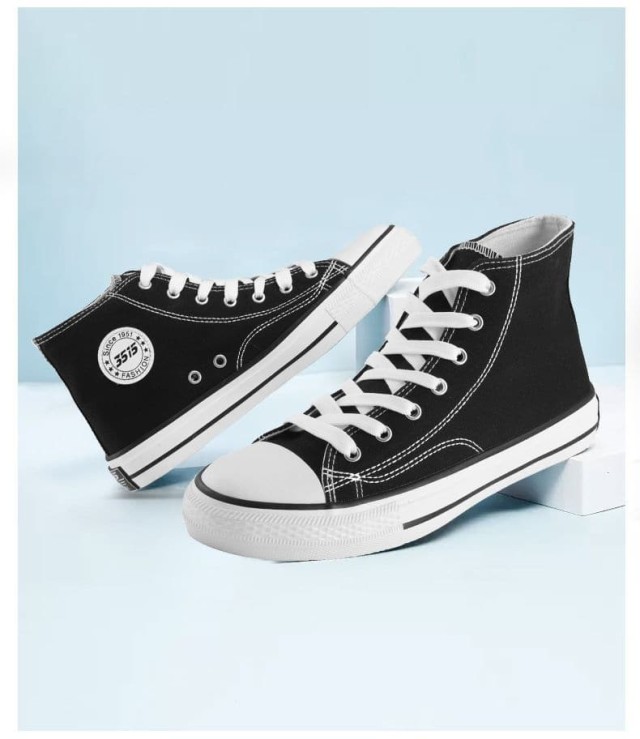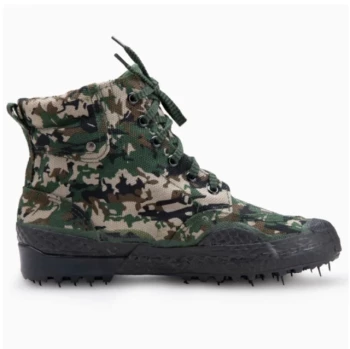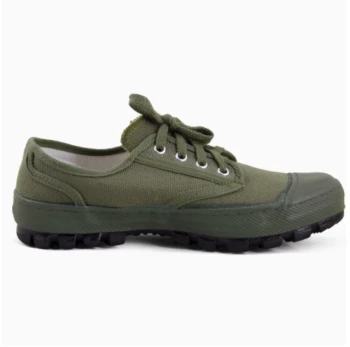For skaters, shoes aren’t just footwear—they’re tools that directly influence trick execution and comfort. Vulcanized skate shoes have dominated skate parks for decades, prized for their unmatched board feel and flexibility. But how do they compare to cupsole alternatives, and what trade-offs should you consider? This guide breaks down construction nuances, performance benefits, and maintenance strategies to help you choose—and preserve—the right pair.
Identifying Vulcanized Skate Shoes
The Role of Foxing Tape in Construction
Vulcanization isn’t just a buzzword; it’s a specific manufacturing process where a thin rubber outsole is bonded to the shoe’s upper using heat and pressure. The defining feature? A strip of rubber called foxing tape that wraps around the shoe’s perimeter, sealing the sole and upper together.
- Visual Cue: Look for a visible seam where the tape meets the upper, often slightly raised.
- Tactile Test: Press the sidewall—vulcanized soles feel uniformly flexible, while cupsoles feel stiffer near the midsole.
Key Differences from Cupsole Designs
Unlike vulcanized shoes, cupsoles use a pre-molded, multi-layered sole unit glued or stitched to the upper. This creates:
- Thicker cushioning for impact absorption
- Reinforced structure for support during high-impact landings
Why Skaters Choose Vulcanization
Flexibility vs. Durability: The Trade-Off
Research shows vulcanized soles excel in two areas:
- Board Feel: The thin sole mimics barefoot skating, offering micro-adjustments mid-trick. Ideal for technical maneuvers like flip-ins or rail balances.
- Grip: Flatter tread patterns maximize surface contact, critical for maintaining control in bowls or during pivots.
However, this comes at a cost:
- Faster wear: Thin soles degrade quicker, especially with frequent ollies or slides.
- Less cushioning: Not ideal for stair sets or large gaps unless paired with supportive insoles.
Ideal Use Cases
- Transition skating: The flexibility aids in pumping and carving.
- Street tricks: Lightweight design enhances flick speed for flip tricks.
Beyond Identification: Maximizing Your Shoe’s Lifespan
Common Wear Patterns
- Foxing Tape Separation: Heat and friction cause the tape to peel, exposing the glue line.
- Sole Erosion: Ollie zones (outer side of the forefoot) wear down fastest due to repeated abrasion.
Repair Hacks for Foxing Tape Separation
- Cleaning: Remove dirt with rubbing alcohol before repairs.
- Adhesives: Use flexible rubber cement (not super glue) to reattach tape, clamping it for several hours.
Pro Tip: Rotate multiple pairs to distribute wear evenly.
Ready to Elevate Your Skate Game?
Whether you’re a distributor sourcing bulk orders or a skater prioritizing precision, vulcanized shoes offer a proven balance of control and responsiveness. At 3515, we manufacture performance-driven footwear designed to meet the demands of skaters worldwide. Explore our range to find the perfect blend of durability and board feel—because every trick deserves the right foundation.
How has your skating style influenced your shoe preferences? Share your experiences below.
Products You Might Be Looking For:
Explore durable vulcanized skate shoes
Related Products
- Durable Rubber Sole Outdoor Shoes Wholesale & Custom Manufacturing
- Durable Spiked Camouflage Boots Wholesale & Factory Production
- Durable Rubber-Soled Utility Shoes for Wholesale & Custom Brand Manufacturing
- Wholesale Durable Camo Canvas Shoes with High-Traction Rubber Soles
- Durable Canvas Work Shoes with Rubber Lug Sole | Wholesale Manufacturer
Related Articles
- Why Vulcanized Soles Dominate Technical Skateboarding: A Science and Performance Breakdown
- Vulcanized Shoes Decoded: When They Shine and When to Choose Alternatives
- How Vulcanized Soles Became the Unsung Hero of Urban Footwear Culture
- Why Vulcanized Shoes Dominate Durability and Comfort: A Technical and Practical Guide
- How Vulcanized Rubber Powers High-Performance Applications Across Industries



















